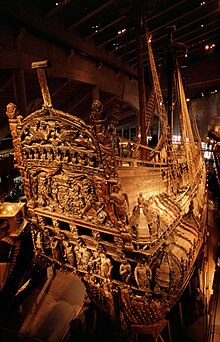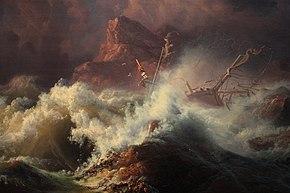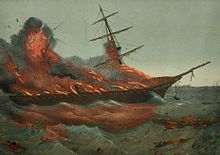SPANISH PIRATE COB COIN
AUTHENTIC PIRATE SHIPWRECK ERA TREASURE COIN
This is an authentic Spanish Cob Coin.
Coin is shown in a standard snap case slab. I keep all of my shipwreck coins in these holders. The number you see on the slab is my catalog number and has no other meaning.
These are great for making jewelry, teaching history or just being able to hold a coin that is 100's of years old in your hands.
I have been collecting shipwreck items for over 40 years and the time has come to let someone else enjoy these pieces.
I will be listing dozens of items. Coins, buttons, drawer pulls, dining wear, silverware, and several other items from some famous and other shipwrecks like the Titanic, El Cazador, Buffalo Coin Pile wreck, Admiral Gardner and others.
I will combine shipping if items are purchased within 24 hours of each other.
Thanks for looking and happy hunting.
A shipwreck is the wreckage of a ship that is located either beached on land or sunken to the bottom of a body of water. Shipwrecking may be intentional or unintentional. Angela Croome reported in January 1999 that there were approximately three million shipwrecks worldwide (an estimate rapidly endorsed by UNESCO and other organizations).
When a ship's crew has died or abandoned the ship, and the ship has remained adrift but unsunk, they are instead referred to as ghost ships.
Types
Historic wrecks are attractive to maritime archaeologists because they preserve historical information: for example, studying the wreck of Mary Rose revealed information about seafaring, warfare, and life in the 16th century. Military wrecks, caused by a skirmish at sea, are studied to find details about the historic event; they reveal much about the battle that occurred. Discoveries of treasure ships, often from the period of European colonisation, which sank in remote locations leaving few living witnesses, such as Batavia, do occur as well. Some contemporary wrecks, such as the oil tanker Prestige or Erika, are of interest primarily because of their potential harm to the environment. Other contemporary wrecks are scuttled in order to spur reef growth, such as Adolphus Busch and Ocean Freeze. Many contemporary and historic wrecks, such as Thistlegorm, are of interest to recreational divers that dive to shipwrecks because they are interesting to explore, provide large habitats for many types of marine life, and have an interesting history.
Well known shipwrecks include the catastrophic Titanic, Britannic, Lusitania, Estonia, Empress of Ireland, Andrea Doria, Endurance or Costa Concordia. There are also thousands of wrecks that were not lost at sea but have been abandoned or sunk. These abandoned, or derelict ships are typically smaller craft, such as fishing vessels. They may pose a hazard to navigation and may be removed by port authorities.
Causes
Poor design, improperly stowed cargo, navigation and other human errors leading to collisions (with another ship, the shoreline, an iceberg, etc.), bad weather, fire, and other causes can lead to accidental sinking. Intentional reasons for sinking a ship include: intending to form an artificial reef; destruction due to warfare, piracy, mutiny or sabotage; using the vessel for target practice; or removing a menace to navigation. A ship can be also used as breakwater structure.
State of preservation
Many factors determine the state of preservation of a wreck:
- the ship's construction materials
- the wreck becoming covered in sand or silt
- the salinity of the water the wreck is in
- the level of destruction involved in the ship's loss
- whether the components or cargo of the wreck were salvaged
- whether the wreck was demolished to clear a navigable channel
- the depth of water at the wreck site
- the strength of tidal currents or wave action at the wreck site
- the exposure to surface weather conditions at the wreck site
- the presence of marine life that consume the ship's fabric
- temperature
- the acidity (or pH), and other chemical characteristics of the water at the site
The above - especially the stratification (silt/sand sediments piled up on the shipwrecks) and the damages caused by marine creatures - is better described as "stratification and contamination" of shipwrecks. The stratification not only creates another challenge for marine archaeology, but also a challenge to determine its primary state, i.e. the state that it was in when it sank.
Stratification includes several different types of sand and silt, as well as tumulus and encrustations. These "sediments" are tightly linked to the type of currents, depth, and the type of water (salinity, pH, etc.), which implies any chemical reactions that would affect potential cargo (such as wine, olive oil, spices, etc.).
Besides this geological phenomenon, wrecks also face the damage of marine creatures that create a home out of them, primarily octopuses and crustaceans. These creatures affect the primary state because they move, or break, any parts of the shipwreck that are in their way, thereby affecting the original condition of amphorae, for example, or any other hollow places. Finally, in addition to the slight or severe destruction marine animals can create, there are also "external" contaminants, such as the artifacts on and around the wreck at Pickles Reef and the over-lapping wrecks at the Molasses Reef Wreck, or contemporary pollution in bodies of water, that severely affect shipwrecks by changing the chemical structures, or further damaging what is left of a specific ship.
Despite these challenges, if the information retrieved does not appear to be sufficient, or a poor preservation is achieved, authors like J.A. Parker claim that it is the historical value of the shipwreck that counts as well as any slight piece of information or evidence that is acquired.
Construction materials
Exposed wooden components decay quickly. Often the only wooden parts of ships that remain after a century are those that were buried in silt or sand soon after the sinking. An example of this is Mary Rose.
Steel and iron, depending on their thickness, may retain the ship's structure for decades. As corrosion takes place, sometimes helped by tides and weather, the structure collapses. Thick ferrous objects such as cannons, steam boilers or the pressure vessel of a submarine often survive well underwater in spite of corrosion.
Propellers, condensers, hinges and port holes were often made from non-ferrous metals such as brass and phosphor bronze, which do not corrode easily.
Salinity of water
Freshwater and low saline
Shipwrecks in some freshwater lakes, such as the Great Lakes of North America, have remained intact with little degradation. In some sea areas, most notably in Gulf of Bothnia and Gulf of Finland, salinity is very low, and centuries-old wrecks have been preserved in reasonable condition. However, bacteria found in fresh water cause the wood on ships to rot more quickly than in seawater unless it is deprived of oxygen. Two shipwrecks, USS Hamilton and USS Scourge, have been at the bottom of Lake Ontario since they sunk during a violent storm on August 8, 1813, during the War of 1812. They are in "remarkably good" condition.
Seawater
Wrecks typically decay rapidly when in seawater. There are several reasons for this:
- Iron-based metals corrode much more quickly in seawater because of the dissolved salt present; the sodium and chloride ions chemically accelerate the process of metal oxidation which, in the case of ferrous metals, leads to rust. Such cases are prominent on deep-water shipwrecks, such as RMS Titanic (sank 1912), RMS Lusitania (sank 1915), and German battleship Bismarck (sank 1941). However, there are some exceptions; RMS Empress of Ireland (sank 1914) lies in the saltwater portion of the St. Lawrence River, but is still in remarkably good condition.
- Unprotected wood in seawater is rapidly consumed by shipworms and small wood-boring sea creatures. Shipworms found in higher salinity waters, such as the Caribbean, are notorious for boring into wooden structures that are immersed in sea water and can completely destroy the hull of a wooden shipwreck.
Loss, salvage, and demolition
An important factor in the condition of the wreck is the level of destruction at the time of the loss or shortly afterwards due to the nature of the loss, salvage or later demolition.
Examples of severe destruction at the time of loss are:
- Being blown onto a beach, reef, or rocks during a storm, termed "grounding" (e.g., Royal Adelaide)
- Collision with another ship (e.g., Andrea Doria)
- Catastrophic explosion (e.g., HMS Hood), steamship boilers often explode when water covers them during the process of sinking
- Fire that burns for a long time before the ship sinks (e.g., Achille Lauro)
- Foundering, i.e., taking in so much water that buoyancy is lost and the ship sinks (e.g., RMS Titanic and HMHS Britannic); some ships with a dense cargo (e.g., iron ore) may break up when sinking quickly and hitting a rocky seabed
- Enemy action from aerial bombs or torpedoes that may cause destruction before sinking (e.g., the Italian battleship Roma and HMS Barham)
After the loss, the vessel's owners may attempt to salvage valuable parts of the ship and its cargo. This operation can cause further damage.
Shipwrecks in shallow water near busy shipping lanes are often demolished or removed to reduce the danger to other vessels. On charts, some wreck symbols have a line under the symbol with a depth mark, which indicates the water depth above the wreck.
Depth, tide and weather
On the seabed, wrecks are slowly broken up by the forces of wave action caused by the weather and currents caused by tides. Also more highly oxygenated water, which promotes corrosion, reduces the strength of ferrous structural materials of the ship. Deeper wrecks are likely to be protected by less exposure to water movement and by lower levels of oxygen in water.
Temperature
Extreme cold (such as in a glacial-fed lake, Arctic waters, the Great Lakes, etc.) slows the degradation of organic ship materials. Decay, corrosion and marine encrustation are inhibited or largely absent in cold waters.
Marine pollution
Many modern shipwrecks contribute to marine pollution, mainly as sources of significant oil spills. A 2005 survey of shipwrecks since 1890 found that over 8,500 of the submerged wrecks may still contain oil. Oil spills can have devastating effects on marine and coastal environments as well as fisheries. In addition to being toxic to marine life, polycyclic aromatic hydrocarbons (PAHs), found in crude oil, are very difficult to clean up, and last for years in the sediment and marine environment.
Shipwreck pollution may also originate with a ship's cargo or munitions, such as unexploded ordnance or chemical weapons canisters. German trawler V 1302 John Mahn, sunk in the North Sea in 1942, has multiple unexploded depth charges on board which render the wreck hazardous. Samples taken from the wreck and nearby sediment show the presence of heavy metals like nickel and copper, polycyclic aromatic hydrocarbons, arsenic and explosive compounds into surrounding waters, which have changed the local microbial ecology.
Natural deterioration process
Iron and steel wrecks are subject to corrosion, which is most rapid in shallow sea water where the salinity induces galvanic corrosion, oxygen content is high and water movement replenishes the oxygen rapidly. In deeper water and in still water the corrosion rates can be greatly reduced. Corrosion rates of iron and steel are also reduced when concretions, solid layers of rust, or layers of marine organisms separate the metal from the ambient water, and encourage the development of a layer of relatively stable black oxide in the hypoxic layers.
Ships that sink upright onto a sand bottom tend to settle into the sand to a similar level to that at which they would normally float at the surface. The thinner materials of the upper works tend to break up first, followed by the decks and deck beams, and the hull sides unsupported by bulkheads. The bow and stern may remain relatively intact for longer as they are usually more heavily constructed. Heavy machinery like boilers, engines, pumps, winches, propellers, propeller shafts, steering gear, anchors and other heavy fittings also last longer and can provide support to the remaining hull, or cause it to collapse more rapidly. Vessels that come to rest upside down on a yielding seabed can be relatively stable, although the upper decks usually collapse under the load and machinery and fittings fall. Wrecks that rest on their side tend to deteriorate quickly, as the loads are not what they were designed to support, and poorly supported hull sides give way fairly soon and the wreckage collapses. Wrecks supported by a rocky seabed tend to collapse over and around the rocks relatively rapidly. Submarines tend to last longer as they are built much more strongly to withstand the working loads of external pressure, and may last for centuries.
Value
A shipwreck may have value in several forms:[20]
- Cultural heritage,
- Recreational diving and other tourism attraction
- scientific, educational and monetary values
- Artificial reefs
- Monetary value of salvageable cargo and components
Salvage
Often, attempts are made to salvage shipwrecks, particularly those recently wrecked, to recover the whole or part of the ship, its cargo, or its equipment. An example was the salvage of the scuttled German High Seas Fleet at Scapa Flow in the 1920s and 1930s. The unauthorized salvage of wrecks is called wrecking.
Notable salvages
In 2011, the most valuable cargo of a sunken shipwreck was identified near the western edge of the Celtic Sea. This World War II era sinking of Gairsoppa led to a treasure almost three miles (16,000 ft; 4,800 m) deep.
A U.S. federal court and a panel from the United States Court of Appeals for the Eleventh Circuit have upheld the Spanish claim to the contents of the ship Nuestra Señora de las Mercedes; Spain took control of the treasure in February 2012. A very small number of coins and effects recovered from the ship were deposited in Gibraltar, because they showed clear signs coherent with an internal explosion on the ship and thus confirmed Spanish claims to the wreck being that of the Nuestra Señora de las Mercedes. They were not returned to Spain until 2013, when a court finally ordered Odyssey Marine to return the missing pieces.
Archaeologist Valerios Stais discovered one of the most notable instruments of time keeping and prediction of celestial events off the coast of the Greek island Antikythera on May 17, 1902. The device, known as the Antikythera Mechanism, is perhaps the earliest example of what would be known as today as an analog computer, and the technology it encompasses predates any other recorded description by hundreds or thousands of years.












